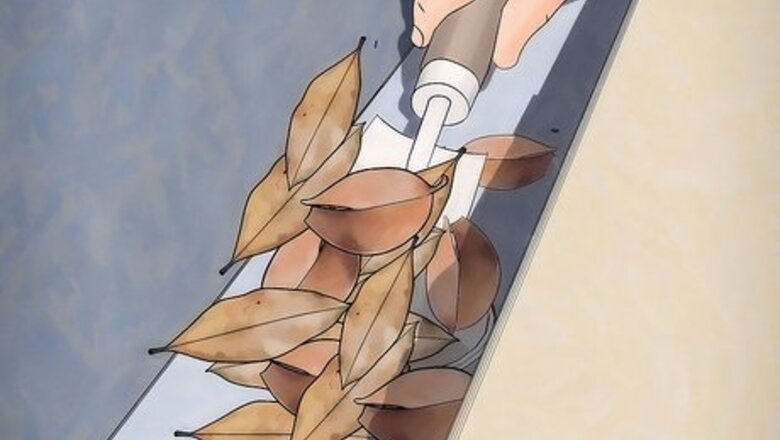
views
How to Divert Water from the House
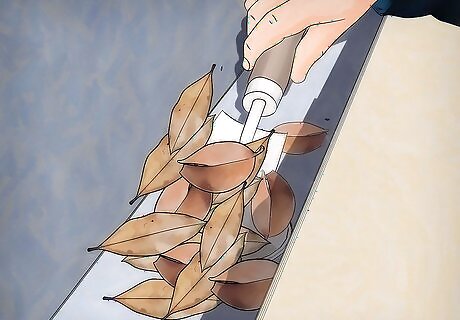
Maintain your gutter systems with regular cleanings twice per year. Gutters collect rainwater from your home's roof and deposit it onto the ground. Most residential gutters are made from aluminum with a downward slope of ⁄2 inch (1.3 cm) towards the downspout for every 10 feet (3.0 m). Leaves, needles, and other debris can clog the system, so wear rubber gloves to clean the muck out by hand. Inspect gutters at least twice per year and after big rainstorms. Follow up the debris removal with good water flushing from your garden hose. Ensure the water flows freely from the downspouts, and remove any blockages that may prevent this. If you prefer, you can hire a professional to clean your gutters. The charge for this service varies, depending on the size of your home, but usually ranges from $50 to $250.
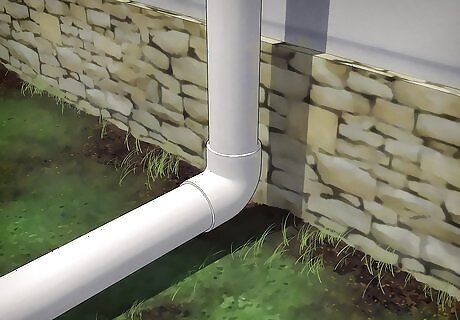
Install downspout extensions. Downspouts are the parts of the gutter that run vertically from the roof gutter to the ground. To extend them, attach an elbow to the end of the downspout and then connect an extension piece. The extension piece will be several feet of straight pipe that can be screwed on. Make sure to direct water at least 6 feet (1.8 m) away from your home’s foundation. If necessary, connect the downspouts to a PVC pipe and bury the pipe underground to direct the water further from your home. Avoid pointing the downspout extensions towards your driveway, as water runoff can freeze your driveway during the winter.
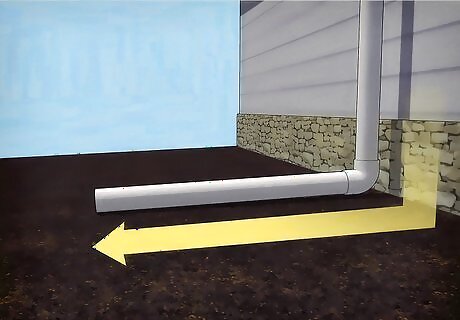
Properly grade the ground around your home. Overflowing gutters and inefficient downspouts can erode the ground surrounding your home. This erosion can create a trench in the soil that traps water there. If you see any gaps like this, fill them in with soil. Add more than you need to create a gentle slope 2–3 feet (0.61–0.91 m) that will lead the water away from the house. Avoid soils with high clay content since these drain poorly. Purchase granular soil with a high sand content. Buy one bag to start the job. Once you know how much area 1 bag covers, you'll have a good idea of how many more you'll need to finish the job based on the size of your home. Pack soil around your house and slope it downwards at about 1 inch (2.5 cm) per 1 foot (0.30 m). Be sure to pack the soil firmly when creating the slope. Then, add grass seed, which, once it takes root, will prevent the soil from eroding.
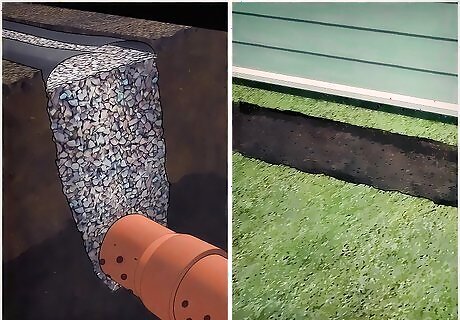
Dig a trench for a French drain. A French drain is a trench filled with gravel and a perforated pipe to redirect water from an area. Begin digging a 4–6 feet (1.2–1.8 m) hole with a shovel surrounding the foundation of your home. Make the trench about 6 inches (15 cm) wide and about 24 inches (61 cm) deep. The trench should extend to the lowest part of your yard. Add a layer of gravel 1–2 inches (2.5–5.1 cm) thick on top of the compacted soil. Install piping with two rows of perforated holes running down its length. Wrap them in landscaping fabric and lay them towards the earth to prevent the holes from getting plugged. Fill the trench with gravel within 1 inch (2.5 cm) of the surface. Cover the remaining 1 inch (2.5 cm) with a piece of sod to disguise the trench.
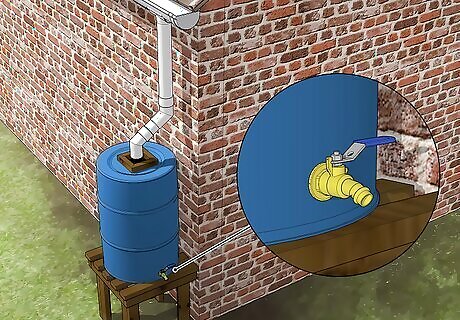
Build a rain barrel for your backyard. Take a 55-gallon barrel and place it beneath your gutters' downspout or where water accumulates the most. Use a power drill to make a 5-inch hole above the base of the barrel and another hole 3 inches from the top for overflow. Attach a spigot to both holes. Cut or drill another hole large enough for the downspout to fit into. Rain barrels collect water runoff that can then be used to water your lawn or garden, wash your car and outdoor items, or flush a toilet.
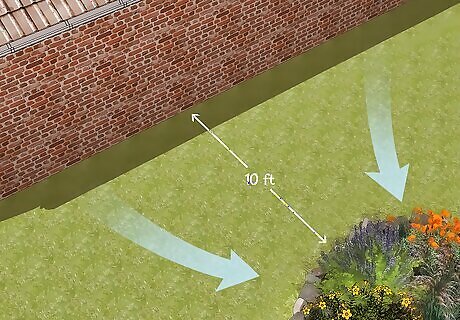
Create a rain garden that absorbs excess gutter water. An attractive way to divert water is with a rain garden, which absorbs runoff to reduce flooding. Choose a spot at least 10 feet (120 in) from the house and 50 feet (600 in) from a septic system. Remove the grass with a sod cutter or sharp spade. Use a shovel and dig at least 6 feet (72 in) deep. Dig a trench for a pipe that can carry water from one downspout to the rain garden and fill it with gravel, like a French drain. Fill the area with rain-garden soil. Group plants in zones. For instance, place plants that thrive in wet environments in the center. For plants that thrive in standing water, place these at the edges.
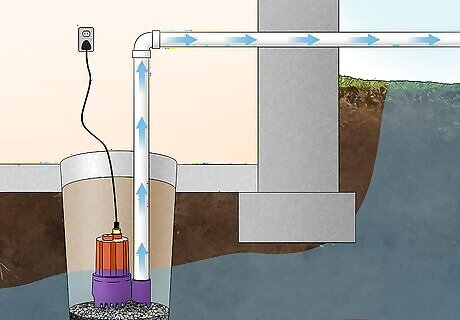
Install a sump pump for basement flooding. If your basement is prone to floods during a storm, locate the lowest point and dig a hole deep enough to accommodate a sump pump. Add 2 inches (5.1 cm) of gravel to the bottom of the hole, then place the pump into the hole. Run a flexible hose through the basement wall to remove excess water. Apply a layer of concrete to conceal the hole surrounding the pump. Use a hole saw to drill through the basement wall. Run the pipe through and caulk the edges to fill in any gaps. A sump pump has a float valve that rises when the water level does; this is what activates the pump.
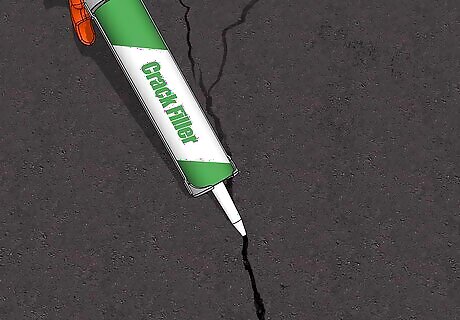
Seal coat your driveway as a preventative measure. Water can seep into cracks in your driveway and expand or contract due to fluctuating temperatures. Over time, this can create water drainage issues. Squeeze or pour in crack sealer to fill ⁄4 inch (0.64 cm) cracks or larger. Then, cut in the borders of your driveway using a 4-inch paintbrush. Apply two coats of driveway sealant with a squeegee. If you have potholes in your driveway, use an asphalt repair mix to fill them.
Common Causes of Drainage Issues
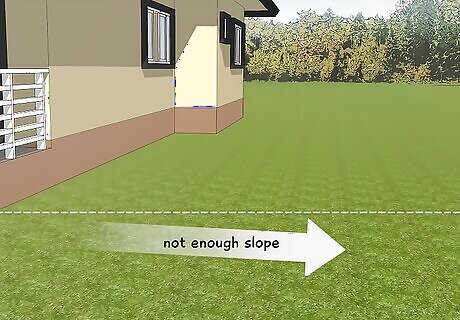
Insufficient grading Grading refers to correcting the slope of your yard so rainwater flows away from the foundation of your home. Generally, a yard’s grading should be between 3% to 25%. Anything less can create drainage issues while grading more than 25% can create erosion issues.
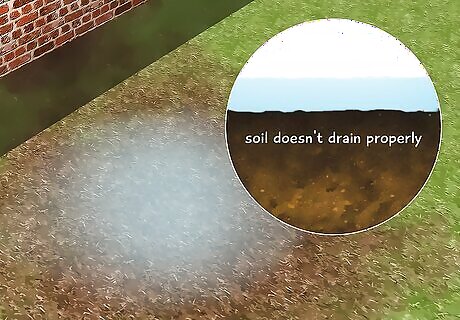
Poor soil drainage If your soil doesn't drain properly, it can become waterlogged and inefficient at drying properly. To prevent this, use organic matter, like composting, to improve the soil's drainage quality.
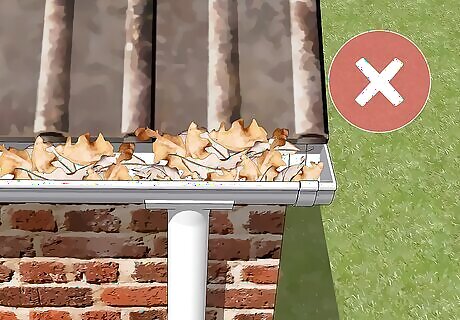
Debris in gutters and downspouts A common cause of drainage issues is an over-clogged gutter. These systems can be easily filled with debris after a storm, so cleaning them before or after a storm can benefit your property.
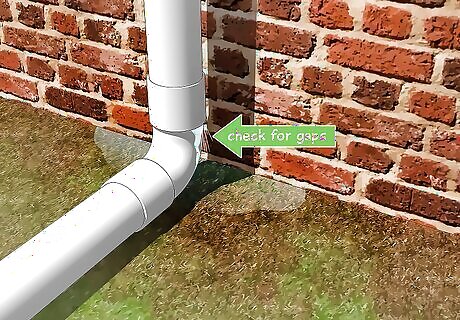
Faulty drainage systems If your gutters or downspouts weren't installed properly, it can prevent water from flowing away from your house correctly. Inspect your drainage system for any blockages, cracks, or gaps affecting its performance.
Signs of Water Drainage Problems
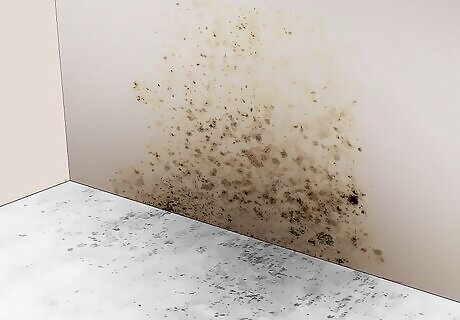
Structural damage A home's foundation withstands natural forces to keep your home standing. However, the more water collects around the foundation over time, the more pressure it puts on it. You may notice cracks in the walls, warped floors, or even mold or mildew growth in the basement. Foundation damage is a costly repair problem ranging between $2,000 to $8,000. A common sign of structural damage is leaks in the basement. Look out for where water can seep through the windows and cracks.
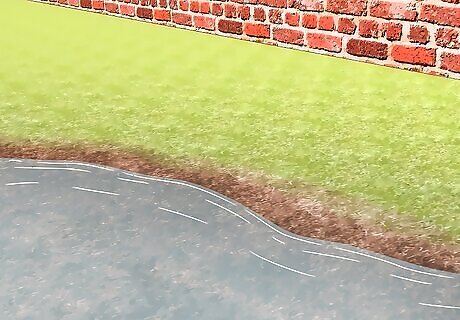
Pooling or standing water As much as you may love to stomp in a puddle of water on the street, it's not so fun it's in your backyard. You may find puddles around the house or scattered around the yard. Standing water can attract mosquitoes and other pests and create an eyesore.
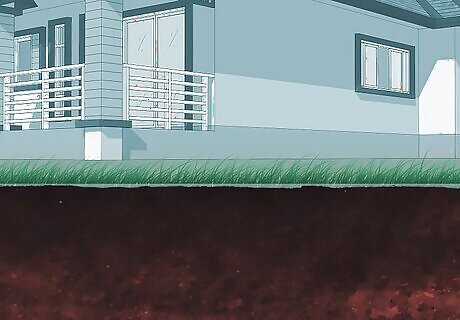
Soggy lawn The more water accumulates, the harder it is to dry, leading to soggy grounds that can negatively affect grass and plant growth. Similarly, it'll leave your backyard feeling more like a mud pit than an oasis for relaxation.




















Comments
0 comment